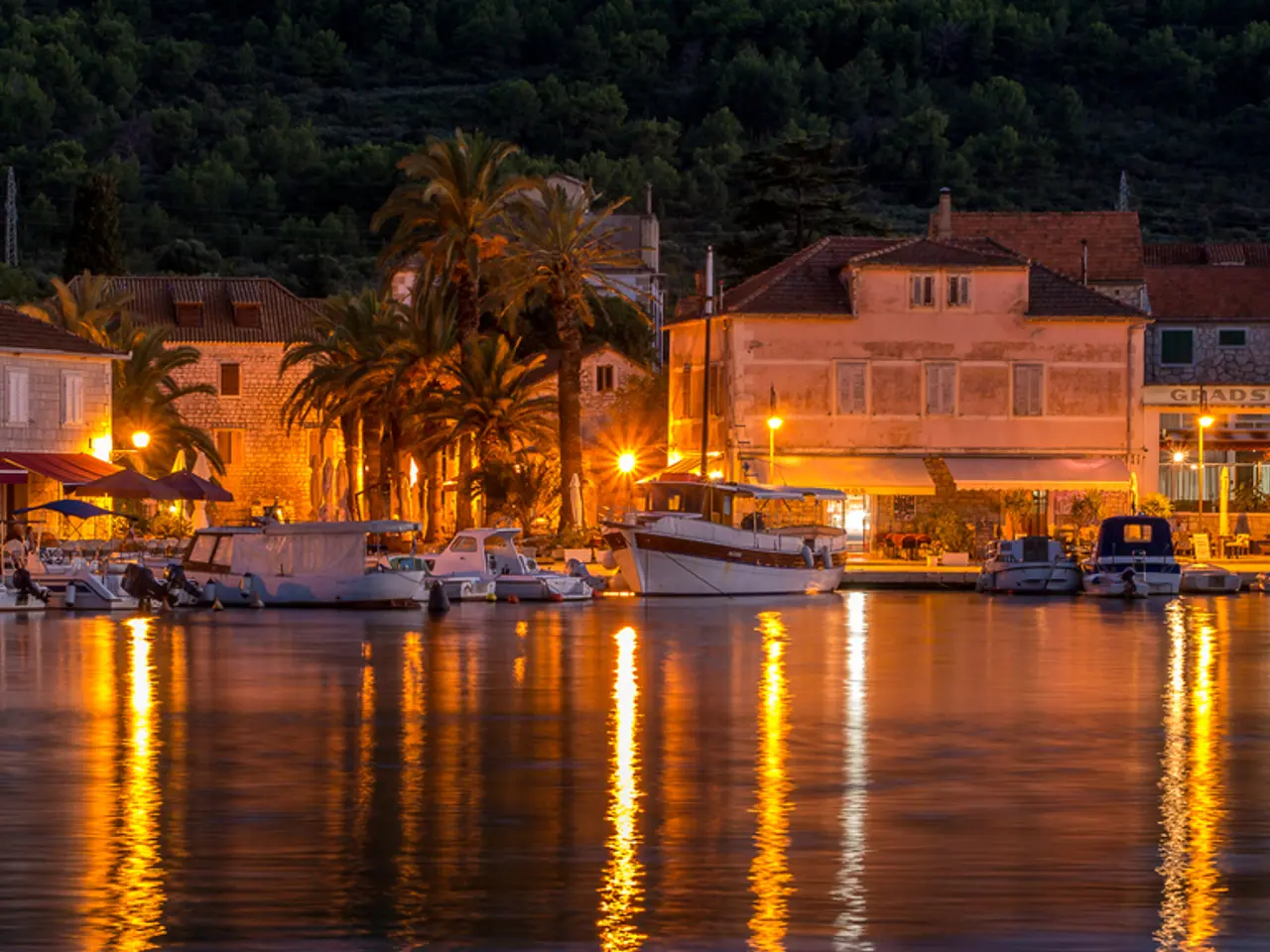Sweden's Ambitious Blueprint for Pioneering Electric Water Vehicle Technology
In the heart of Gothenburg, Sweden, an exciting event is underway as part of the electric vehicle symposium EVS 38. The focus? Electric boats.
The seafaring community is facing a significant transition, with electric boats posing greater challenges than their road-bound counterparts. However, incentives and regulations are being introduced to help the shift.
X Shore, a pioneering Swedish electric boat manufacturer, is leading the way with sleek, efficient boats that can travel from Gothenburg to Fjallbacka or down to Humburgsund along the Swedish West Coast.
Another innovative company, Candela, is taking a high-tech approach with hydrofoil electric boats. These vessels, which are already in operation in Stockholm, reduce energy consumption by an impressive 80-90%. The C-8 leisure craft from Candela, on display in Gothenburg, is powered by a motor from Polestar.
Volvo Penta, a key player in the marine industry, is showcasing a hybrid boat that combines diesel and electric technology. The boat on display is designed to demonstrate the potential of battery-powered vessels for grid energy storage. It features a battery around 80kWh and can be used for frequency balancing or energy trading during the winter season.
The Volvo Penta boat can even generate revenue when not in use by charging at low power or using solar panels, and providing local energy.
Sweden is hosting an event called "Enjoy The Silence" to showcase electric boat companies and technology. The country, which is second only to Norway in EV penetration, is a fitting location for this transition from land to water.
One of the benefits of electric boats is their silence, which eliminates pollution and emissions. This aligns well with Sweden's national goals for carbon neutrality and maritime sustainability.
The go:LEIF project is focusing on building charging infrastructure around marinas to allow electric boat travel up and down the Swedish West Coast. This infrastructure, along with the smart grid technology being integrated into marinas, could serve as a model for coastal regions globally seeking to reduce emissions from leisure and commercial boating.
The first electric boat demonstration aimed to prove that it is possible to travel with an electric boat. Since then, advancements in battery systems such as lithium-ion and solid-state batteries have enabled electric boats to exceed 100 nautical miles of range. These are complemented by solar charging panels and hydro-regeneration systems that extend operational time, along with AI-driven energy management and IoT monitoring to optimize performance.
Pol, although mainly focused on electric cars, has shown interest in sustainable electric propulsion systems. The Pol boat on display in Gothenburg has a potential for limitless range, with the help of solar panels. It can transport up to 13 people at a speed of 4 knots when there is sufficient light.
In Sweden, the potential for sustainable coastline marinas is actively being explored. These marinas aim to integrate onshore electric charging infrastructure powered by renewable energy, facilities designed for electric boats, and smart grid technology for efficient energy management and demand-response capabilities.
The combination of Swedish electric boat innovators like X Shore and Candela with emerging sustainable marina infrastructure aligns well with Sweden’s national goals for carbon neutrality and maritime sustainability. These developments could serve as a model for coastal regions globally seeking to reduce emissions from leisure and commercial boating.
Overall, the electric boat sector in 2025 is marked by rapid technological progress in battery and propulsion systems, intelligent energy management, and ecosystem development—such as sustainable marinas—especially in innovation hubs like Sweden with key players X Shore and Candela leading the charge.
- X Shore and Candela, two exciting Swedish electric boat companies, are pushing the boundaries in their respective fields, offering efficient and silent boats that can travel on the Swedish West Coast, demonstrating the potential of electric boats for sustainable living.
- In alignment with Sweden's national goals for carbon neutrality and maritime sustainability, the home-and-garden sector is also focusing on building charging infrastructure for electric boats along the coast, allowing for a more sustainable lifestyle in the boating community.
- The electric vehicle symposium EVS 38 in Gothenburg is not only showcasing the latest advancements in electric cars but also in electric boats, with both cars and boats being integral parts of the technology and sustainable-living movement.




